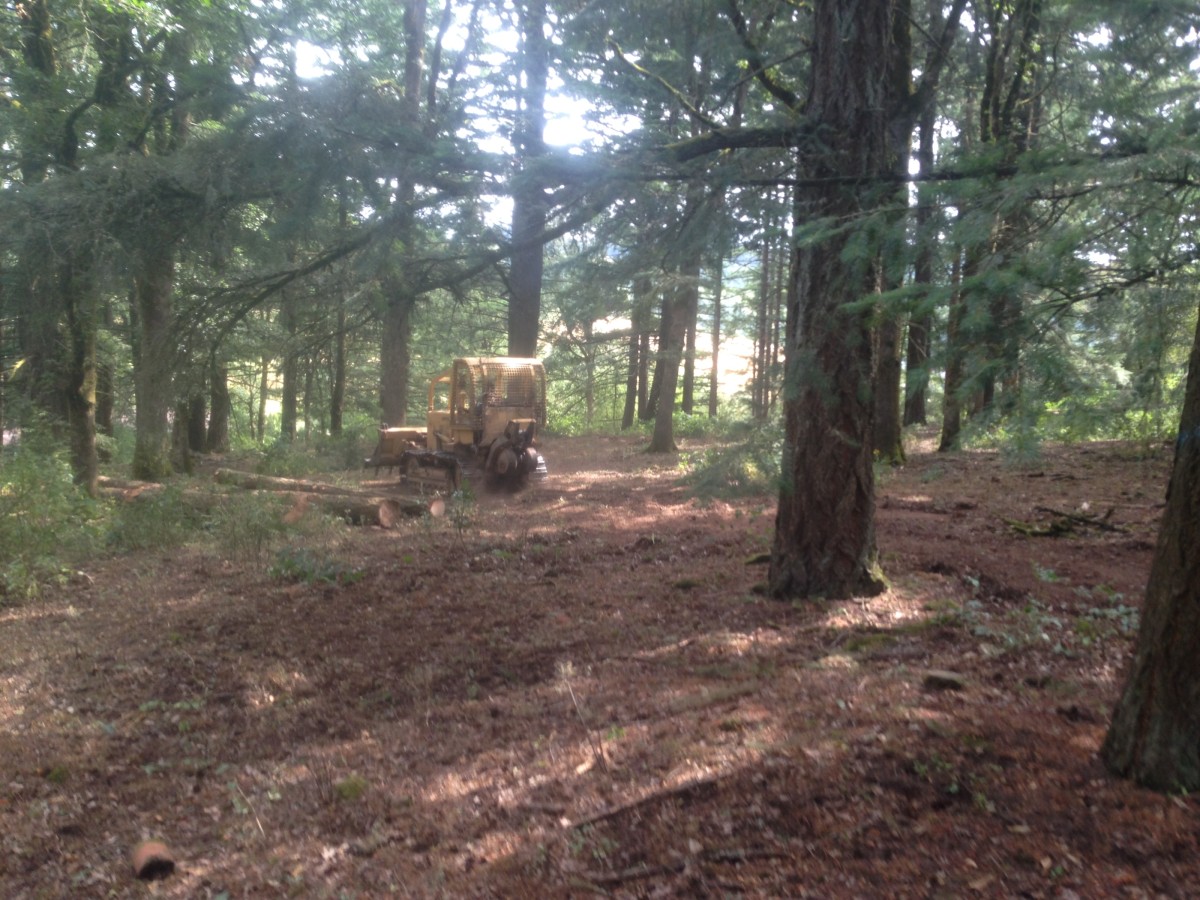Oak woodland takes up a little over thirteen acres of a 60-acre organic farm on the edge of our District where Multnomah and Washington County meet. While assisting the farm owner with land management issues, we noticed that valuable Oregon white oak trees were being slowly taken over by Douglas fir. The family that grew up on the land were receptive to trying to save the oak, especially since old-growth Oregon oak next door in Washington County had been cut for development.
Oregon oak woodlands are in drastic decline — they represent only 15% of their historic range. The trees are magnificent and support wildlife such as the acorn woodpecker and the Western gray squirrel, as well as hundreds of species of insects, which provide food for birds and wildlife. Oregon oak and associated habitats are part of a diminishing ecosystem that was managed by Native Americans in our region for thousands of years.
The first step in the plan to protect native oaks on the farm was to remove the Douglas fir that were shading and suppressing the oaks. The District and landowner decided to thin the areas of Douglas fir and sell it to pay for the project. A professional forester obtained permits, helped set up a purchase agreement with a local sawmill and hire a private contractor to do the logging by hand. Trees were carefully selected and harvested to meet the project’s objectives. Some of the logs were cut, de-limbed and sent to a nearby lumber mill; others with rot or large knots were left for use as firewood. The remaining debris was left for wildlife piles or was burned if it became overgrown with invasive species. Grasses were also seeded in the understoryUnderstory The area under and around trees to stabilize areas of fine-silt soil disturbed during the logging process.
The future care and nature of the oak woodland understory will depend on the grazing needs of the farm’s organic cattle. Goats may also be used to manage invasive weeds. Areas not needed for grazing may be planted with native trees, shrubs, wildflowers or grasses — to further enhance the wildlife habitat quality and historic nature of the woodland.
